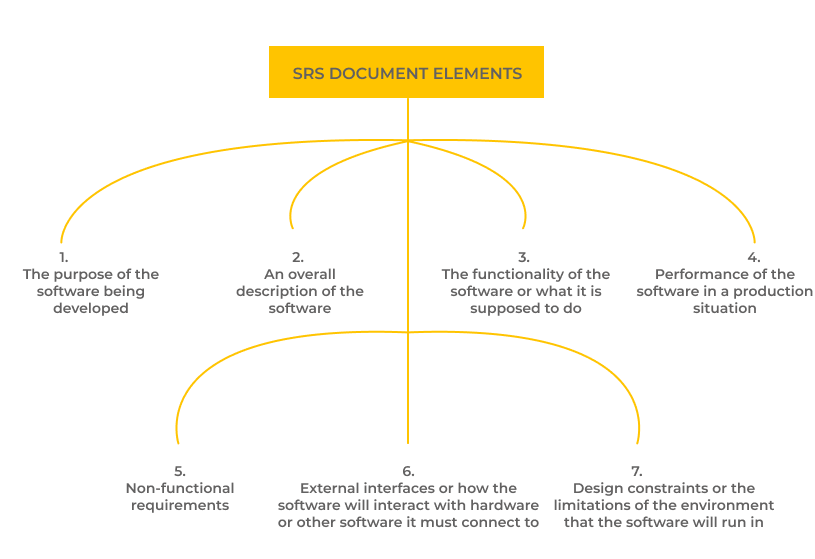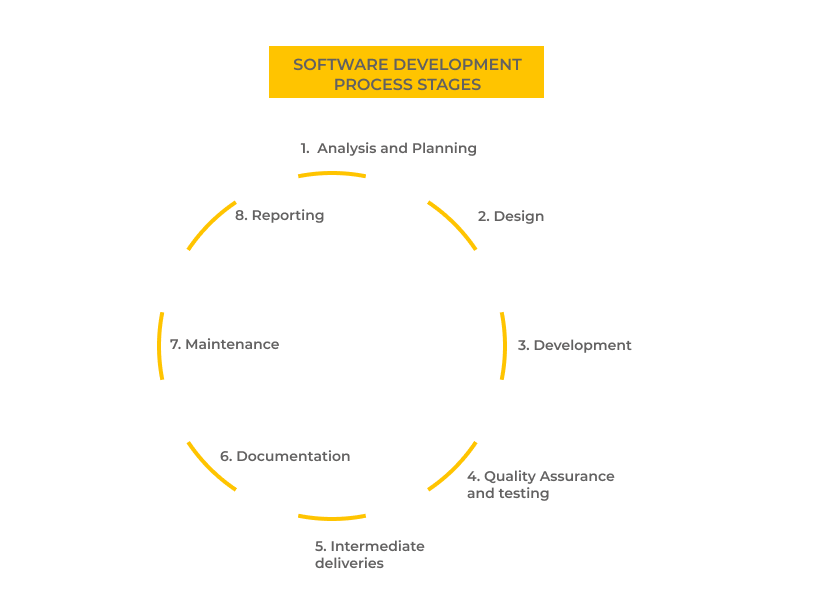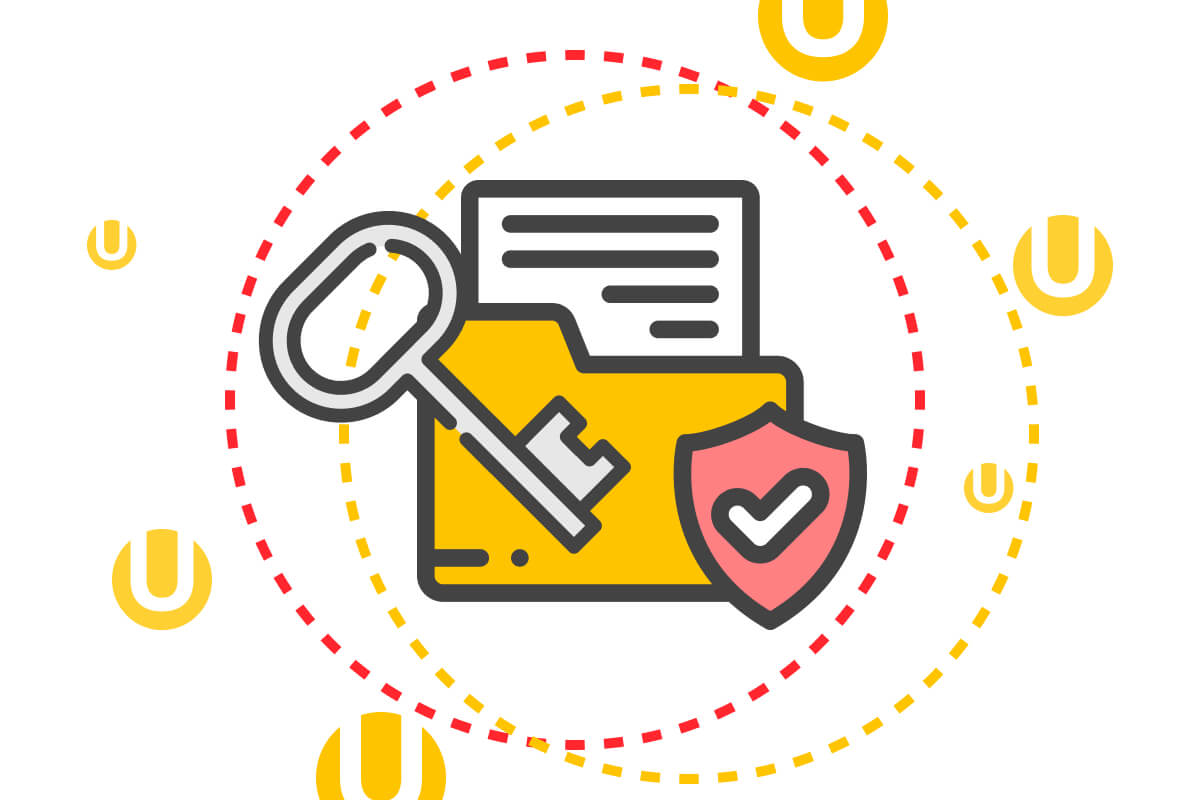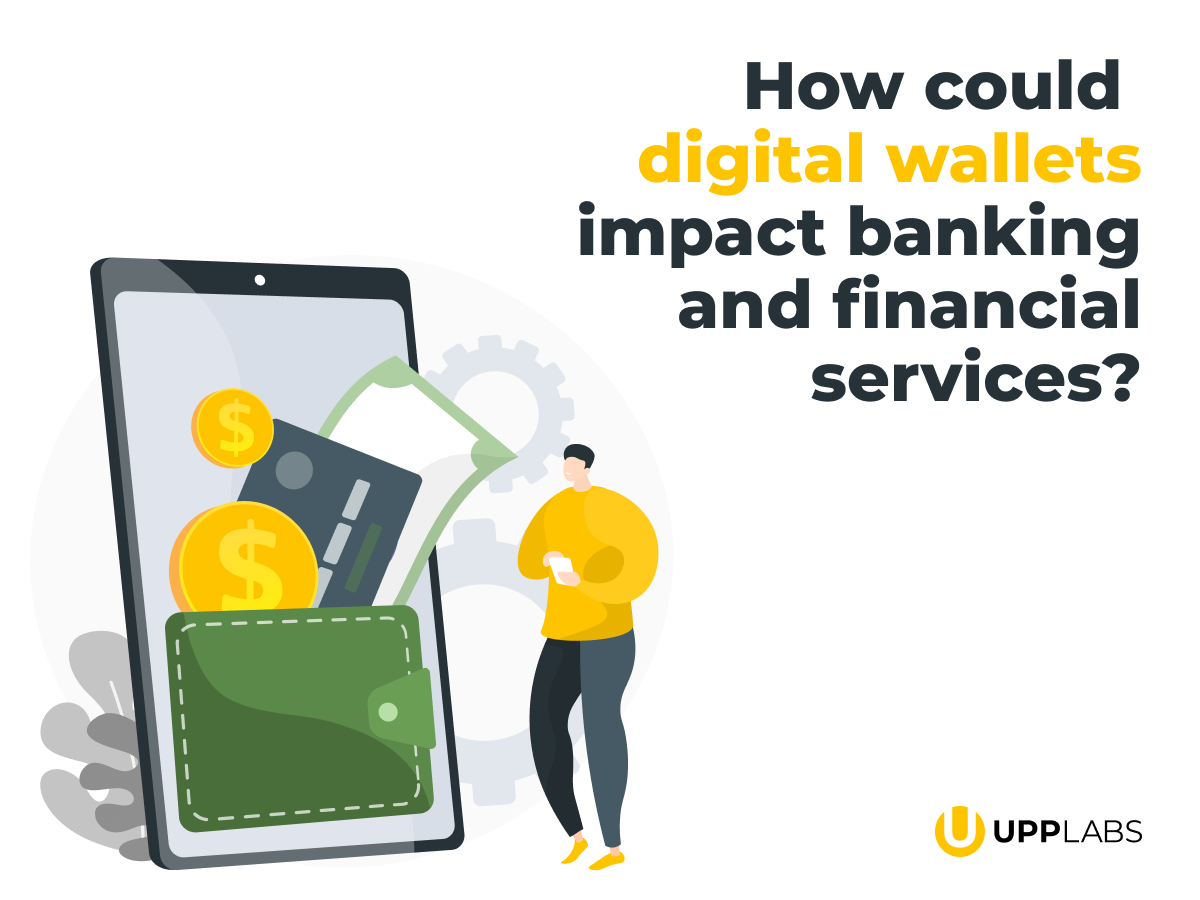Start a successful project: a guide on business requirements, docs, mockups, and communication with the vendor
All software development products require documentation that covers the business requirements, guides on mockups creation, clarifies product functionality, and serves as the basis for discussing essential issues between business owners and developers. The main goal of creating such documentation is to grant that you are heading in the same direction as the development team.
There are plenty of document types and requirements that need to be mentioned. We collected some of the main project’s documentation and would like to guide you on how to prepare it to start the successful project development.
1. Start with marketing research
Before searching for the vendor and starting the development of your product, you need to conduct marketing research. The analysis of the market you are going to conquer is a must. Market research is a complex and narrow-profile study of the market structure and all of its objects. It is initially conducted at the stage of developing a business plan. Then it is repeated so that the business owner and marketers always have access to information about the current state of the market. Qualified marketing research will increase business profitability, achieve sales growth now and in the future.
Main stages of market research:
- Comprehensive market study
It is a complete analysis of your business niche. You need to determine the structure of the market and its dynamics. At this stage, it’s essential to take into account the key trends and perspectives when developing a promotion strategy for your product. You need to study the total volume of your type of goods or services and determine the share of imports and exports. The next step is to mark the average sales in the niche to understand the target group’s purchasing power, the relevance of the product, and the deficit level.
- Competitors analysis
The marketing research plan will be incomplete if you don’t analyze your competitors’ advantages and disadvantages. You need to study the range and list of competing companies’ services and compare them with your unique selling proposition. If you don’t know what competitive products offer and how they branch out, you won’t create an efficient positioning. It is also essential to understand the “strength of the brand” of competitors, their communication strategy with potential and loyal customers, and the promotion method in social networks and search engines. Then it will be easier to articulate your benefits and out of them.
- Target Audience (TA) analysis
In this stage, it’s crucial to study your products or services’ features to understand who the target audience is. Here, the expert group needs to collect such data as:
– demographic characteristics of potential customers: gender and age;
– the level of customers welfare;
– hobbies, and values of potential customers;
– other aspects of the audience.
The analysis should also include the specifics of your product and its place in the market. It will become clear what criteria customers rely on when choosing a company to solve their problems. Marketing research will help determine communication channels.
- SWOT-analysis
The SWOT-analysis will help to determine the services of your business. It isolates the strong and weak sides of the company. After this stage, it will become apparent the focus of advertising and what improvements need to be fulfilled to get more customers. The conclusion of the SWOT-analysis will serve as the basis for a digital strategy.
This will lead you to the creation of a value proposition.
2.The process of preparing high-level project specifications
A Software Requirements Specification (SRS) is a detailed list of a software system description that needs to be developed. The requirements can be functional and non-functional and usually include:
– a purpose;
– general description;
– specific requirements.
While working on the specification, it is necessary to take into account a large amount of data:
- general block of information about the project: goals, objectives, terminology, user audience;
- general description of the product: functionality, details of users, product operating environment, framework, restrictions, rules, and standards;
- descriptions of algorithms and processes, flow diagrams, functional requirements, interface requirements (UX, API, hardware);
- non-functional requirements are requirements to ensure data security, safety, speed, intellectual property, and licensing policies.
The list of sections may vary depending on the specific type of document (Request for proposal (RFP), Terms of Reference (TOR), Software Requirements Specification (SRS)).
An example structure of an SRS document can include:
- Purpose of the software
- Definitions
- System overview
- References
- General description of the software
- Product perspective (that includes system/user/hardware Interfaces)
- Design constraints (that includes operations, product requirements and functions)
- Specific requirements
- External interface requirements
- Performance requirements
- Logical database requirement
- Functional requirements
- Functional partitioning
- Functional description
- Control description
- Non-functional requirements
- Business-model
- System use case
- Technical requirements
- Constraints and assumptions
- Acceptance criteria
- Performance of the software

3. Accurate project estimation
All documentation provided by the client affects the evaluation of the project. While getting an estimation of a new project, the first questions you need to solve and thoroughly discuss are:
– The duration of the project;
– The experience of the proper selection of specialists;
– The top-level accuracy of the project;
– The calculation in case of changes;
– The evaluation in conditions of uncertainty;
– The estimations of required resources;
– The implementation of the latest technologies;
– The maintenance of the project after its completion;
We in UppLabs think that pricing should always be transparent and clear. That is why we developed a mobile application that helps you understand an approximate cost and a timeline to build your web or mobile product.
This free MyAppCost application includes different options, key features, and integrations your application could have. Choosing different types of applications, platforms, and even additional parameters, you will be able to see the approximate price and timeline for your app development and what is included in it.
4. Software development process stages
The documentation types that the team and the client develop their scope depending on the software development approach. Each is unique in terms of accompanying documentation.
The software development process includes such main stages:
- Analysis and Planning
– collection of requirements,
– research,
– changes management,
– risk management,
– software architecture. - Design
– creating wireframes,
– prototyping,
– mockups. - Development
– backend development,
– frontend development. - Quality Assurance and testing
- Intermediate deliveries
- Documentation
- Maintenance
- Reporting

There is some variability in the stages of product development. It happens in its way for each product, but to somehow manage this process, we use software development models – the simplified and generalized idea of how to develop a product. There are two most popular ones: Agile and Waterfall.
Waterfall software development model
The main essence of the Waterfall model is that the stages depend on each other, and the next one begins when the previous one is completed, thus forming a cascade movement. In this case, the integration of parallel parts still occurs at some stage. Teams of various stages don’t communicate with each other, as each team is responsible for its stage.
This model looks linear and relatively simple for the business owners: the completed design stage is followed by programming and then testing. So, this is a step-by-step process that goes until the final point of the development.
This model is embedded in documents, such as contracts and roadmaps, as defined control points. At any time, the team can understand whether a particular checkpoint has been passed or not and whether they met the deadlines. For these reasons, long-term and particularly large projects involving many participating companies are managed mainly by the Waterfall model.
Agile software development model
One of the Agile model principles – interaction – implies that the customer interacts with the team, the team with the customer, so everyone communicates with each other. It allows the client to share experiences between team members, and each of them can influence decision-making. This approach reduces the risk of losing time and money and increases the team’s ability to solve complex non-standard problems with a high degree of uncertainty.
However, the interaction of everyone can result in chaos, which affects all areas of development. Therefore, while using Agile, you need to understand the limitations:
- teams must be small,
- participants must be competent and motivated,
- iterations are short with the most precise goals,
- time limits are set,
- clear final result.
The higher the uncertainty – the shorter the iteration. At the beginning of each iteration, you need to perform control, retrospective, evaluation, and analysis of results and plan the next iteration.
5. User Experience (UX) Design Documentation
User experience design should start at the requirements stage and move on through all the stages of development. The UX design includes research, analysis, prototyping, usability testing, design, and all these stages need to be documented as well.
Before the developers are ready to start writing their code lines, every project requires a pre-development design phase that can show the logic of the website or an app. On the stage of prototyping and designing, a UX designer usually uses the deliverables and creates the documentation that the team members can update. That’s when it’s time to make such list documents:
- Wireframes
- Mockups
- Prototypes
- Site maps
- User flow schemes/user journey
- Usability testing reports
Wireframes are used to detail what information, content, and control elements should be displayed on each page of the interface. Wireframes are used in the early development process to set the basic structure before the visual design and content are added.
The next step after wireframing is designing a mockup. We can transform the schematic layout into a colorful, bright, and static demonstration of the future product with its help. Mockups allow the clients to see shapes, colors, and fonts.
A prototype is a high-fidelity interactive performance of the final product. The prototypes often look like actual websites or applications where users can interact with prototypes and test the features.
At the final stages of the design, all steps should be parts of your design process as all of them are important.
6. Additional: what questions you should ask the potential vendor
While thinking about starting a project, you are stepping into unknown territory that needs to be researched beforehand. In this case, we recommend preparing a list of detailed questions that can answer all of your product’s specifications. It’s up to you to determine the list that corresponds to the needs of your project, but we can select some of the possible questions and answers based on the experience of UppLabs:
- Why does my business need an application?
One of the key features of today’s digital environment is a multichannel system. Organizing an effective presence across various channels that reach potential customers is a vital task for any business. To be closer to your customers, your company needs not only a functional website but a better web or mobile application. Focusing on mobile gadgets is not just a modern trend. It is a must-have strategy to avoid losing existing and potential clients. However, make sure you’ve made market research. When you’ve done it improperly, it could become one of the reasons of your business failure.
P.s. Check what problems your business might have.
- How big will be the project team?
UppLabs can provide you with as many professionals as your project requires. For the middle-sized project, the team usually consists of 2 backend developers, two frontend developers, 1 QA engineer, and 1 Project Manager. Team cohesion, highly experienced and result-oriented employees, innovators in product development, focused on the success, delving deep into the customer’s business’s issues and needs to solve complex tasks – these are the values that allow us to be effective in the development of any complex digital products.
- Which tool and communication channels does the company use for the organization of work?
These include communication software such as Slack and Zoom, productivity tools like Miro, and developer tools such as JIRA, GitLab and GitHub. Time-tracker software also helps everyone, from an individual to a business owner, to learn how you and your team are spending time, as well as how productive your time management is.
- What can be the potential risks of the current pandemic situation?
To help you handle the confusion and anxiety caused by the virus, we’ve brought together some primary steps that should be first on your list as you produce your pandemic contingency plan with today’s needs. This is a contingency plan to run your business during and after quarantine.
- How effectively manage the remote team?
The developers use specific project management tools such as Google’s G Suite and Miro that enhance their productivity and collaboration. UppLabs actively uses the tools and software, especially now, when everyone needs effective remote team management.
- How to ensure the security of the data?
Regardless of your business, security practices are one of our priorities. Over the last six years, we at UppLabs mastered the latest technologies and gained experience in creating reliable, secure, and sophisticated solutions and products. Some of them include encryption of sensitive data, AI and ML, tokenization, secure code and architecture, secure authentication, code obfuscation, etc.
- Is it possible to create a quick prototype to validate your idea or an optimized, scalable platform?
If you are limited in time and budget, or you don’t know where to start, the UppLabs team is ready to help you to validate your ideas by:
- Finding the right tech solutions within your budget;
- Prioritizing of steps and features;
- Product development consultation;
- MVP building.
- How can we measure the success of the product?
To know if a digital product is successful, we need to have a qualitative or quantitative indicator that reflects a particular characteristic and product success level. Quantitative metrics are easier to track and are used more frequently. Based on these numbers, you can always get an idea about what is happening in general: whether users need such a product, how much they like it, whether it solves their problem.
How UppLabs can help
Our software development company works end-to-end with the clients discussing all possible scenarios and questions. Starting from strategy to digital, we bring transformational outcomes. It is UppLabs’ task to show you the opportunities, needs, and threats.
Our assurance software service provider includes:
- Designing and applying appropriate project management standards
- Planning and monitoring the project (timelines and budget)
- Managing project risks
- Ensuring customer satisfaction
- Organizing and motivating a project team
- Creating detailed, comprehensive, and well-structured technical documentation
- Estimating, prioritizing, planning, and coordinating testing activities
- Developing and applying development and testing processes for new and existing products to meet client needs
- Discovery session
- CI/CD (Continuous Integration and Continuous Delivery)
You can always book a call with Upplabs and delegate the task with a value proposition to us.
Every day we implement complex and challenging web and mobile projects. We have accumulated extensive experience in subtleties and nuances, which will undoubtedly help improve any project. We try to help the customer realize the best products because its success is our success too.
If you have any questions – UppLabs is always here to help you! We hope to win your business and build a long-term relationship with you!



